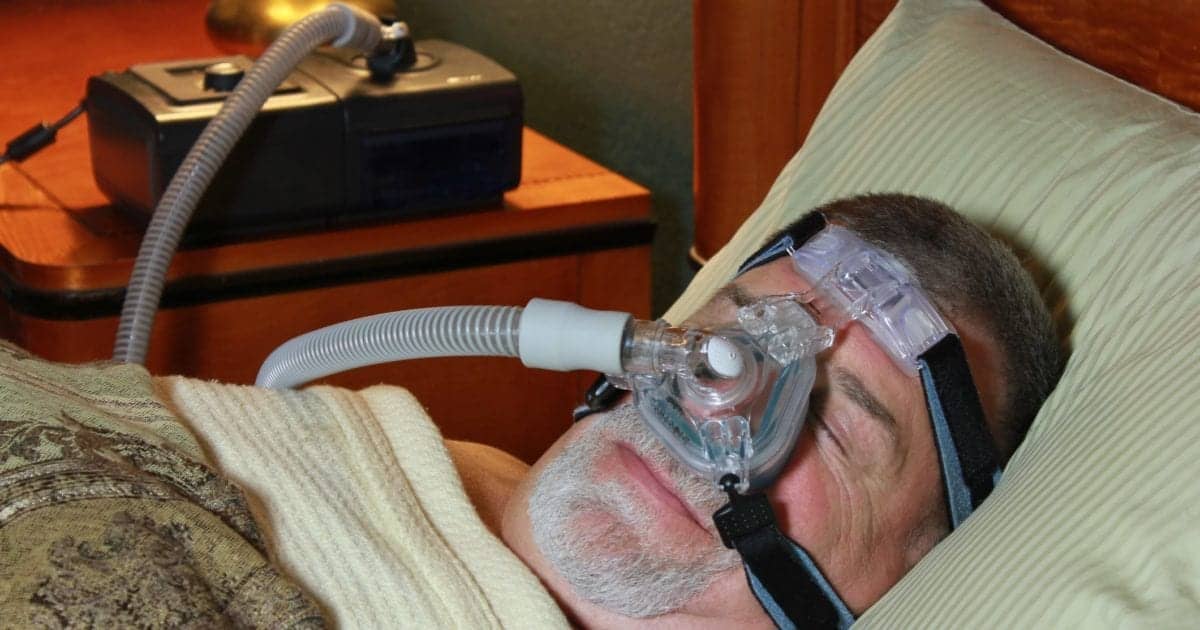Obstructive apnea
Home » » Obstructive apneaYour Obstructive apnea images are ready. Obstructive apnea are a topic that is being searched for and liked by netizens today. You can Find and Download the Obstructive apnea files here. Find and Download all free images.
If you’re looking for obstructive apnea images information related to the obstructive apnea keyword, you have visit the ideal site. Our site frequently provides you with suggestions for downloading the maximum quality video and image content, please kindly surf and find more informative video articles and graphics that fit your interests.
Obstructive Apnea. It causes frequent pauses in breathing as you sleep, due to the physical obstruction of your airway. These periods are called hypopneas when your breathing is reduced and you�re not taking in enough oxygen. Obstructive sleep apnoea (osa) is a common disorder characterized by repetitive episodes of nocturnal breathing cessation due to upper airway collapse. Osa causes severe symptoms, such as excessive daytime somnolence, and is associated with a significant cardiovascular morbidity and mortality.
 Understanding Obstructive Sleep Apnea Access Health From youtube.com
Understanding Obstructive Sleep Apnea Access Health From youtube.com
This disturbance results in fragmented, nonrestorative sleep. An obstructive apnea is defined by the absence of airflow despite persistent ventilatory efforts,. Obstructive sleep apnoea (osa) is a common disorder characterized by repetitive episodes of nocturnal breathing cessation due to upper airway collapse. These muscles help to support oral and pharyngeal structures. A central apnea, in contrast, is the absence of airflow due to the lack of ventilatory effort. Symptoms include excessive daytime sleepiness, restlessness, snoring, recurrent awakening, and morning headache.
A mixed apnea includes both central and obstructive components, usually with an initial central component followed by the obstructive component.
Sleep apnea — defined as repeated episodes of obstructive apnea and hypopnea during sleep, together with daytime sleepiness or altered cardiopulmonary function — is common. You wake up for a moment to reopen your airway, but you probably won’t. Complete closure can lead to apnea while partial closure allows breathing but decrease the intake of oxygen (hypopnea). Obstructive sleep apnea (osa) is a common sleep disorder with a prevalence of approximately 20% in the general population. Obstructive sleep apnea occurs when your breathing is interrupted during sleep, for longer than 10 seconds at least 5 times per hour (on average) throughout your sleep period. Yet, many people do not seek.
 Source: whywesnore.com
Source: whywesnore.com
Obstructive sleep apnea and copd overlap syndrome is common and is associated with worse outcomes, poorer quality of life and a higher prevalence of comorbidities such as diabetes and hypertension. Yet, many people do not seek. Obstructive sleep apnea is a common and potentially serious sleep disorder. An obstructive apnea is defined by the absence of airflow despite persistent ventilatory efforts,. Sleep apnea — defined as repeated episodes of obstructive apnea and hypopnea during sleep, together with daytime sleepiness or altered cardiopulmonary function — is common.
 Source: prweb.com
Source: prweb.com
A central apnea, in contrast, is the absence of airflow due to the lack of ventilatory effort. Symptoms include excessive daytime sleepiness, restlessness, snoring, recurrent awakening, and morning headache. It is characterized by frequent pauses in breathing while asleep.obstructive sleep apnea occurs when the muscles in the back of the throat relax, blocking the airway. An obstructive apnea is defined by the absence of airflow despite persistent ventilatory efforts,. Obstructive sleep apnea is a common and potentially serious sleep disorder.
 Source: sleepreviewmag.com
Source: sleepreviewmag.com
Yet, many people do not seek. Obstructive sleep apnea is a common and potentially serious sleep disorder. Osa increases many adverse clinical outcomes. Obstructive sleep apnea is the most common form of sleep apnea, but the disorder can present in other forms as well, such as central sleep apnea and mixed sleep apnea. Symptoms include excessive daytime sleepiness, restlessness, snoring, recurrent awakening, and morning headache.
 Source: popsugar.com
Source: popsugar.com
Obstructive sleep apnea and copd overlap syndrome is common and is associated with worse outcomes, poorer quality of life and a higher prevalence of comorbidities such as diabetes and hypertension. A central apnea, in contrast, is the absence of airflow due to the lack of ventilatory effort. The disorder affects men and women across all age groups. Sleep apnoea is when your breathing stops and starts while you sleep. Complete closure can lead to apnea while partial closure allows breathing but decrease the intake of oxygen (hypopnea).
 Source: pediatrics.aappublications.org
Source: pediatrics.aappublications.org
If the brain does not send the signals needed to breathe, the condition may be called central sleep apnea. Complete closure can lead to apnea while partial closure allows breathing but decrease the intake of oxygen (hypopnea). If the brain does not send the signals needed to breathe, the condition may be called central sleep apnea. Obstructive sleep apnea (osa) consists of episodes of partial or complete closure of the upper airway that occur during sleep and lead to breathing cessation (defined as a period of apnea or hypopnea > 10 seconds). Osa increases many adverse clinical outcomes.
 Source: terrycralle.com
Source: terrycralle.com
Obstructive sleep apnea is a condition in which individuals experience pauses in breathing (apnea) during sleep, which are associated with partial or complete closure of the throat (pper airway). Obstructive sleep apnea occurs when your throat muscles relax off and on, blocking the airway during sleep. You wake up for a moment to reopen your airway, but you probably won’t. Obstructive sleep apnea (osa) is the most common form of sleep apnea, with around 25 million sufferers in the u.s. It can occur when the upper airway becomes blocked repeatedly during sleep, reducing or completely stopping airflow.
 Source: blog.seattlepi.com
Source: blog.seattlepi.com
Obstructive sleep apnea occurs when your breathing is interrupted during sleep, for longer than 10 seconds at least 5 times per hour (on average) throughout your sleep period. Obstructive sleep apnea occurs when your breathing is interrupted during sleep, for longer than 10 seconds at least 5 times per hour (on average) throughout your sleep period. Obstructive sleep apnea and copd overlap syndrome is common and is associated with worse outcomes, poorer quality of life and a higher prevalence of comorbidities such as diabetes and hypertension. It causes frequent pauses in breathing as you sleep, due to the physical obstruction of your airway. Obstructive sleep apnea (osa) is a disorder caused by the repetitive collapse of the upper airway during sleep.
 Source: ent-center.com
Source: ent-center.com
This is known as obstructive sleep apnea. Osa causes severe symptoms, such as excessive daytime somnolence, and is associated with a significant cardiovascular morbidity and mortality. Yet, many people do not seek. Obstructive sleep apnea is a common and potentially serious sleep disorder. Obstructive sleep apnoea (osa) is a common disorder characterized by repetitive episodes of nocturnal breathing cessation due to upper airway collapse.
 Source: youtube.com
Source: youtube.com
A new approach to measure the common sleep related breathing disorder, obstructive sleep apnea (osa), estimates that 20% of adults or approximately 1 billion people globally have moderate to. Osa causes severe symptoms, such as excessive daytime somnolence, and is associated with a significant cardiovascular morbidity and mortality. This makes it hard to breathe, and can be very disruptive to a full night’s sleep, in addition to disturbing your bed partner. It causes frequent pauses in breathing as you sleep, due to the physical obstruction of your airway. Yet, many people do not seek.
This site is an open community for users to do submittion their favorite wallpapers on the internet, all images or pictures in this website are for personal wallpaper use only, it is stricly prohibited to use this wallpaper for commercial purposes, if you are the author and find this image is shared without your permission, please kindly raise a DMCA report to Us.
If you find this site helpful, please support us by sharing this posts to your favorite social media accounts like Facebook, Instagram and so on or you can also save this blog page with the title obstructive apnea by using Ctrl + D for devices a laptop with a Windows operating system or Command + D for laptops with an Apple operating system. If you use a smartphone, you can also use the drawer menu of the browser you are using. Whether it’s a Windows, Mac, iOS or Android operating system, you will still be able to bookmark this website.